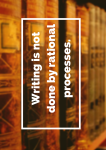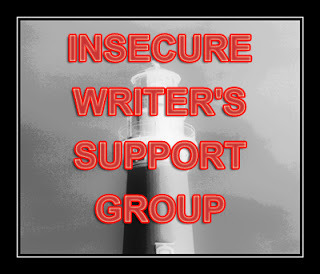Jacqui Murray's Blog, page 143
November 13, 2014
Book Review: Desert God
 Desert God: A Novel of Ancient Egypt
Desert God: A Novel of Ancient Egypt

by Wilbur Smith
My rating: 5 of 5 stars
Prolific author Wilbur Smith’s latest novel, “Desert God: A Novel of Ancient Egypt ” (William Morrow 2014), is the third in his series about Taita, former-slave turned adviser to a Pharaoh. The novel opens as a land-locked Egypt fights for survival against the barbarian Hyksos. Through this first person account, we see how Taita analyzes threats, assesses options, and crafts solutions that invariably work out. Even the surprise ending is a win for Taita as he masterfully turns disaster into success.
” (William Morrow 2014), is the third in his series about Taita, former-slave turned adviser to a Pharaoh. The novel opens as a land-locked Egypt fights for survival against the barbarian Hyksos. Through this first person account, we see how Taita analyzes threats, assesses options, and crafts solutions that invariably work out. Even the surprise ending is a win for Taita as he masterfully turns disaster into success.
I love historic fiction, done well, it’s a perfect blend of a plot-driven ‘history mystery’ and a peek into how people led their lives long before machines did it for us. With dozens of books to his credit, Wilbur Smith is a master if this genre. His voice is forthright and clear with a strong sense of place and time.
The main character in “Desert God”, Taita, is fascinating. He is full of confidence, brilliant, and an extraordinary problem solver. When he is working on a problem, the story becomes a procedural on how he reaches brilliant solutions. Taita is like the heroes I love in thrillers, but lacking the flaws, insecurities, and broken dreams that usually accompany them. Despite this, Taita has an objective acceptance of his superior skills–
“It always surprises me how a few kind words from me are treasured by even the lowliest members of our entourage. One often forgets how one is revered by others less talented than oneself.”
“I often think that I am too forbearing with those who are not as sharp-witted as I am.”
“Modesty usually prevents me from employing the word beautiful when describing myself, but honesty requires me to do so in this instance.”
While he lacks humility, he also avoids hubris.
Noticeably missing in this story was an inciting incident–a crisis around which the plot revolved. The first third of “Desert God” could have been a simple summary of the Egyptian dynasty tightly constrained to Taita’s version of a noble life. Because of his super-human skills (a trait that is explained toward the end of the book), he is not a particularly reliable narrator for an historic novel. It took at least a third of this four hundred-plus page book to find the plot. I won’t tell you what it is, but it surprised me.
Wilbur Smith, with over 125 books to his resume and 125 million fans in 26 languages, is a good find. Overall, “Desert God” is a good mix of history and plotting. I never felt like it was too narrative or pedantic. I’ve already ordered the two prequels to Desert God (which Amazon reviews say are better than this one–I can’t wait).
For more detail on Wilbur Smith’s many series, check out Lilolia’s post here. For a review of an earlier Taita book, check out BooksPlusLife’s review.
More historic novels:
Jacqui Murray is the author of the popular Building a Midshipman, the story of her daughter’s journey from high school to United States Naval Academy. She is the author/editor of dozens of books on integrating tech into education, webmaster for six blogs, an Amazon Vine Voice book reviewer, a columnist for Examiner.com and TeachHUB, Editorial Review Board member for Journal for Computing Teachers, monthly contributor to Today’s Author and a freelance journalist on tech ed topics.
Filed under: book reviews Tagged: history


November 11, 2014
How To Write Descriptions People Want to Read–Dogs
This is the next in the occasional “How to Write Descriptions” series.
If you’re a writer, you know what I mean. You can’t just say, The dog laid down at my feet and fell asleep. That’s boring. It tells the reader nothing about how cute the dog is, how innocent his sleep was, how you reacted to this most loyal of friend doing the most trusting of activities.
I’ve spent years collecting snippets on how to describe characters, create settings, describe actions that I am now going to share with you over a period of, oh, a lot of weeks. I have a 127-page document with categories for things like:
dogs
horses

animals
nature
how eyes move
how mouths move
how faces look
…it goes on and on. Here’s the first page, with links to all my categories:
They are all written by other authors, so don’t use them. Treat them as imagination starters. They force you to think about what it was in your character’s face that gave away his lie. Why the horse in the corral looked so agitated. Those types of descriptions that, being in a book, can only be conveyed with words.
I’ll start with dogs:
The dog snorted happily and bounded forward
The dog curled into a wet lump and lay shivering on the ground
Dog was doing impression of a corpse
He stretched, shook himself and circled several times before dropping to the ground
With pricked ears, he watched for a moment and then yawned
Roaming the backyard, engaged in dog intrigue
Dog’s eyes wide, ears flat, a vibrating growl deep in his chest

Exulting in whatever it is that dogs exult in
dogs wandered off to rest their noses in their paws
roughed them up the way Labs expect to be treated
paws up, aerial
The dog was sprawled across her lap, his sides rising and falling, his nose mashed against the ground in a most uncomfortable-looking manner. Dogs were funny. They could sleep in peculiar positions.
Dogs, after voiding their excrement, often make with all four feet a few scratches backwards, even on a bare stone pavement, Wolves and jackals behave in the same manner, yet, as I am assured by the keepers, neither wolves, jackals, nor foxes, when they have the means of doing so, ever cover up their excrement, any more than do dogs. All these animals, however, bury superfluous
 food.
food.Dogs and jackals take much pleasure in rolling and rubbing their necks and backs on carrion. The odor seems delightful to them. wolves don’t roll in the odor
Dogs scratch themselves with one of their hind-feet; and when their backs are rubbed, they rapidly scratch the air or the ground in a useless and ludicrous manner. by licking the air as if it were a hand.
As he prepares to spring with a savage growl, canine teeth are uncovered, and the ears pressed close backwards on the head
flopped onto the floor in a full doggy snit
happy woofing sounds of a dog discovering hidden treasures

wag its tale and watch with hopeful eyes
dog watched him, ears up, head slightly cocked
dogs, when intently watching and slowly approaching prey, keep one of their fore-legs doubled up for a long time, ready for the next cautious step. they behave in exactly the same manner whenever their attention is aroused. I have seen a dog at the foot of a high wall, listening attentively to a sound on the opposite side, with one leg doubled up
the one which first sees the other, lowers its bead, crouches a little, or even lies down; takes the proper attitude for concealing himself

When a dog approaches a strange dog or man in a savage or hostile frame of mind he walks upright and stiffly; his head slightly raised; tail held erect and rigid; the hairs bristle, especially along the neck and back; the pricked ears are directed forwards, and the eyes have a fixed stare
trotting gravely with high steps, head much raised, moderately erected ears, and tail carried aloft but not stiffly
young dogs in play growling and biting each other’s faces and legs
The dog got worried, crawled up on the bed, raced around chasing a ball, finally chased it out of the room. From her roommates room, she heard her barking, growling at the dog, slapping and playing, tossing the ball and the dog returned. She wondered who thought who was whose pack.
Who could not love a dog?
For more on writing about dogs, check out WayCoolDogs.
More descriptors:
How To Describe Your Character’s Appearance in a Phrase
How to Write Descriptions People Want to Read: Nature
Jacqui Murray is the author of the popular Building a Midshipman, the story of her daughter’s journey from high school to United States Naval Academy. She is the author/editor of dozens of books on integrating tech into education, webmaster for six blogs, an Amazon Vine Voice book reviewer, a columnist for Examiner.com and TeachHUB, Editorial Review Board member for Journal for Computing Teachers, monthly contributor to Today’s Author and a freelance journalist on tech ed topics.
Filed under: characters, descriptors, setting, writers, writers resources Tagged: characterizations, descriptions, writers, writers life, writers resources


November 9, 2014
15 Tips Picked Up From Twitter
I confess, I like Twitter. It’s pithy, cogent, brief, with the type of Headline Hints that stick. I don’t always believe them, but am often entertained. And the posters–love them. They always catch my attention for at least a second. I created my own group of aphoristic posters using Canva and Muzy (very easy. Click the links and try them):















*—credit for quotes to Richard Bausch
About once a year, I curate a list of favorite Twitter tips. Here are my 2014 favorites:
Loading the dishwasher is not the time to get CREATIVE.
One page at a time (@NaNoWriMo)
“If you want to write, you can. Fear stops most people from writing, not lack of talent…” (@advicetowriters)
Start with a memorable introduction (@galleycat)
Don’t pause for research. Guess. Fake it. Leave a mark in the MS and follow up (@jamesscottbel–referring to getting a novel done during #NaNoWriMo)
credit: Debbie Ridpath Oh @inkyelbows

Broken sleep is a golden time for creativity (@doctorow)
After finishing your draft, ignore it for a month. Then start editing (@Masqcrew)
1) Write some words. 2) Look at the words. 3) Delete the words. 4) Sigh. 5) Make an omelette. (@matthaig1)
Use a crock pot, save cooking time, write a novel (@mashable)
The time to write has to be created (@fionaquinnbooks)
Success is 1% inspiration, 98% perspiration and 2% attention to detail- (@jonnygeller)
Write without fear; edit without mercy (@i_author)
The problem with cliché is when you plug in the basic template and never set the customizations. (@indieplottwist)
There are really only three stories: audience goes away unhappy, audience goes away happy, audience never comes (@Shakespeare)
More Twitter writing tips:
27 More (Writing) Tips From Twitter
21 Tips About Writing From Twitter
Writers Tip #88: 16 Tips Picked Up From Twitter
To have these tips delivered to your email, click here.
Jacqui Murray is the author of the popular Building a Midshipman, the story of her daughter’s journey from high school to United States Naval Academy. She is the author/editor of dozens of books on integrating tech into education, webmaster for six blogs, an Amazon Vine Voice book reviewer, a columnist for Examiner.com and TeachHUB, Editorial Review Board member for Journal for Computing Teachers, monthly contributor to Today’s Author and a freelance journalist on tech ed topics.
Filed under: social networks, writers tips Tagged: nanowrimo, twitter


November 6, 2014
Book Review: Killing Patton
 Killing Patton: The Strange Death of World War II’s Most Audacious General
Killing Patton: The Strange Death of World War II’s Most Audacious General

by Bill O’Reilly and Martin Dugard
My rating: 5 of 5 stars
Bill O’Reilly and Martin Dugard’s Killing Patton (Henry Holt and Company 2014) unsurprisingly recounts the death of General George S. Patton Jr., the most famous General on all three sides of WWII. It is the fourth in the ‘Killing’ series, covering the assassination/murders of President Lincoln, President Kennedy, and Jesus –all best sellers.
When I read the first in this list–Killing Lincoln–I didn’t know as much as I should have about the assassination of America’s sixteenth President. I skipped Kennedy and Jesus for the same reason I read Lincoln.
Patton, though–I didn’t even know there was a mystery.
Like the Titanic movie, the basic story is no surprise. Superhero flawed warrior fights off his personal demons to perform miracles and turn the tide of war. Good thrillers all include those elements. It was the allusion to a long-hidden mystery where I had no idea one existed that made me buy the book. Written in typical O’Reilly-Dugard fashion, it is cogent, well-researched, heavily-evidenced, and non-conspiratorial, with the type of countdown of Patton’s days the authors used in Killing Lincoln. The internet is full of pithy Patton quotes, but I’ll add a few more:
“We shall attack and attack until we are exhausted, and then we shall attack again.”
“I had all my staffs… in for a conference. As usual on the verge of an attack, they were full of doubt. I seemed always to be the ray of sunshine, and by God, I always am. We can and will win, God helping.”
“Faith and patience be damned! You have just got to make up Your mind whose side You are on. You must come to my assistance so that I may dispatch the entire German Army as a birthday present to your Prince of Peace.” [Gen. Patton prays to God]
“Have taken Trier with two divisions.” [a message sent by Patton to Allied headquarters after received an order from them to bypass Trier because 'it will take four divisions to capture it']
And the courage of American soldiers:
“Any man can break. But the advancing Americans know they don’t have that luxury. Just like the Roman legions who once fought off the Germanic hordes on this same stretch of land, they hold the fate of Europe in their hands.” [referring to the Battle of Bastogne]
“They’ve got us surrounded. The poor bastards.” [referring to the Battle of Bastogne]
No, the story is no surprise, but I was surprised how much I didn’t know about the details:
I didn’t know President Roosevelt was as sick as he was. Polio was just the tip of his personal iceberg.
I didn’t know Hitler was as sick as he was–physically, that is.
I didn’t know Patton believed in reincarnation:
Patton is convinced that he was a soldier and a great general in his many past lives. He once stood shoulder to shoulder with Alexander the Great and Napoleon. He crossed the Alps on an elephant [as Hannibal]… … Though he had never visited [Langres France], Patton gave [his French liaison officer] a tour of the Roman ruins, including the amphitheater, parade ground, and various temples dedicated to a deity. He also drove straight to the spot where Caesar had once camped…
I didn’t know Churchill came up with the term ‘iron curtain’.
I didn’t know how much Patton hated the Russians.
I didn’t know Stalin ordered Patton’s death (though the book doesn’t allege Patton was killed by the Soviets, merely posits this as one possibility).
That’s a lot I didn’t know considered how much I’ve read about WWII.
Before closing: Some in the media (the Washington Post quoting MSNBC and Media Matters) panned the book’s claim that Patton was killed by the Soviets, repeating the official finding that Patton died from complications of the car accident that paralyzed him. Truly, I didn’t get that from the book–that conclusion, that Patton was killed by the Soviets. In fact, O’Reilly-Dugard offered many scenarios, one being that there was no murder at all, that his death resulted from what the government called a ‘fender bender’
Have you read this book–or any in the series? What do you think?
More biographies:
Jacqui Murray is the author of the popular Building a Midshipman, the story of her daughter’s journey from high school to United States Naval Academy. She is the author/editor of dozens of books on integrating tech into education, webmaster for six blogs, an Amazon Vine Voice book reviewer, a columnist for Examiner.com and TeachHUB, Editorial Review Board member for Journal for Computing Teachers, monthly contributor to Today’s Author and a freelance journalist on tech ed topics.
Filed under: Uncategorized


November 4, 2014
#IWSG–Am I getting too old?
 This post is for Alex Cavanaugh’s Insecure Writers Support Group (click the link for details on what that means and how to join. You will also find a list of bloggers signed up to the challenge that are worth checking out like Rebecca who inspired me to begin). The first Wednesday of every month, we all post our thoughts, fears or words of encouragement for fellow writers.
This post is for Alex Cavanaugh’s Insecure Writers Support Group (click the link for details on what that means and how to join. You will also find a list of bloggers signed up to the challenge that are worth checking out like Rebecca who inspired me to begin). The first Wednesday of every month, we all post our thoughts, fears or words of encouragement for fellow writers.
This month’s insecurity – Am I getting too old?
I remember three years ago–when I finally (huzzah!) found an agent
who loved my books as much as I did
–thinking I didn’t have a lot of time left before I wouldn’t want to write anymore. I’m assuming at a certain point in aging, that fire in my gut turns to coal and is no longer a passion to write, rather a job. I’m assuming age will precipitate that if not something else.
Three years ago, I found an agent and did the math:
it takes two-three years to bring a book to the shelves after it’s selected
it takes at least a year–probably two–to write a book. In my case, that’s more like five years, but I figured I’d write faster now that I had an advocate
that means three-four years for each book
I had maybe ten more years of writing in my fingers
When events caused my agent and I to part ways
(amicably–I still adore him), it was with mixed feelings. Sure, I’d lost a megaphone for announcing me to the literary world, but I’d gained an accelerated production timeline. Self-pubbing is a lot faster than traditional. I won’t get into goods and bads of that, just the cold hard facts that a self-pubbed book can hit the market much faster than any traditional house.
And still, I’ve made no progress. I’ve published quite a few non-fic, but not my WIP.
When am I too old?
Is it really about satisfying my need to tell a story and not about making a living? Will it satisfy me if my book succeeds and provides security to my children?
I have no idea. Anyone been there?
More IWSG articles:
Am I good enough? Does it matter?
When does technical become boring
Jacqui Murray is the author of dozens of books (on technology in education) as well as the popular Building a Midshipman , the story of her daughter’s journey from high school to United States Naval Academy. She is webmaster for six blogs, an Amazon Vine Voice book reviewer, a columnist for Examiner.com and TeachHUB, Editorial Review Board member for Journal for Computing Teachers, monthly contributor to Today’s Author and a freelance journalist on tech ed topics. In her free time, she is editor of technology training books for how to integrate technology in education. Currently, she’s editing a techno-thriller that should be out to publishers next summer.
Filed under: writers, writing Tagged: insecure writers group, iwsg, writers


November 2, 2014
What is NaNoWriMo and 11 Reasons You Might Have Joined
 Do you hear that? A mix of jungle drums and Jaws music, equal parts menace and madness? It starts every October, in your fingers as a tingle, travels up your arms, into your belly, and washes over your five senses like hot lava from Krakatoa.You try to fight it, act like there’s nothing wrong, but that only makes it worse. It’s as contagious as typhoid, as addictive as smoking, and as lethal to your well-planned life as a canyon wildfire. Your brain becomes a suggestion box rather than the finely-tuned instrument that speeds you through your day like the Tokyo bullet train. Now, everything is weighed against writing.
Do you hear that? A mix of jungle drums and Jaws music, equal parts menace and madness? It starts every October, in your fingers as a tingle, travels up your arms, into your belly, and washes over your five senses like hot lava from Krakatoa.You try to fight it, act like there’s nothing wrong, but that only makes it worse. It’s as contagious as typhoid, as addictive as smoking, and as lethal to your well-planned life as a canyon wildfire. Your brain becomes a suggestion box rather than the finely-tuned instrument that speeds you through your day like the Tokyo bullet train. Now, everything is weighed against writing.
“I’ll go to the movies if I write a thousand more words…”
If it was a pet, it’d be a coral snake. If it was a vacation, it would be hell.
It’s called NaNoWriMo. Every November, over 300,000 people join together online with a personal goal of each writing a 50,000-word novel in one month.It has been variously called “worse than a rampant computer virus” and “better than a long walk without a shadow”. It has either the charm of a dirty needle or the excitement of a new love. Once you catch the bug, nothing can cure you. Luckily, it ends November 30th at midnight. Then, you can breath without gasping, eat without shoveling, and talk without typing.
On November 1st, it’s an invasion and your body has been well and truly snatched. All you can think about is writing.
It doesn’t matter if you work as a retail clerk or the CEO of a billion dollar company. No one is exempt and no doctor can make it go away. In fact, the only cure is to write–scribble, type, claw, bleed–until you’ve beaten back that thirst, drowned it in words, filled your soul with a new story. Only then can you put down your pencil and move away from the notebook.
As frightening as this sounds, there are reasons you might be participating:
The act of writing lessons the sense of panic that you will never get your plot figured out.
It keeps you out of therapy.
If your characters have the depth of a stick figure (I stole that line from my friend, Marla Miller‘s Deadly Little Secrets–great book, btw), take a month to fix them.
How hard can it be to write? Hemingway did it. Anonymous did it. A bunch of authors do it who aren’t even alive anymore (I won’t name names).
Coffee helps. Anything that goes with coffee is worth doing.
You can skip the house cleaning. You won’t have time.
There’s a certain peace to knowing what you’ll be doing for a month.
There’s a beauty to being able to turn hope to despair, idealists into Machievellians, all with the clack of computer keys and a few thousand well-chosen words
You don’t have to write a prize-winning book. You just have to write 50,000 words. How hard can that be?
There are hundreds of reason why your mother is right–you are the best writer on the planet–but finishing your novel isn’t one of them. NaNoWriMo will make you finish your novel.
Remember the last time you read a really bad book, and knew like you know bow ties should all be clip-ons that you could do better than that published author? Here’s your chance.
Inspired? Ready? Here is Chuck Wendig’s list of 25 things you should know before starting. And how about BloggingPro‘s reasons why you should write it on WordPress (that’s a tough sell).
More on NaNoWriMo:
23 Reasons I’m NOT Doing NaNoWriMo
–republished from Today’s Author
Jacqui Murray is the author of dozens of books (on technology in education) as well as the popular Building a Midshipman , the story of her daughter’s journey from high school to United States Naval Academy. She is webmaster for six blogs, an Amazon Vine Voice book reviewer, a columnist for Examiner.com and TeachHUB, Editorial Review Board member for Journal for Computing Teachers, monthly contributor to Today’s Author and a freelance journalist on tech ed topics. In her free time, she is editor of technology training books for how to integrate technology in education. Currently, she’s editing a techno-thriller that should be out to publishers next summer.
Filed under: Book contests Tagged: nanowrimo


October 31, 2014
Book Review: The Third Rule of Ten
 The Third Rule Of Ten: A Tenzing Norbu Mystery (Dharma Detective: Tenzing Norbu Mystery)
The Third Rule Of Ten: A Tenzing Norbu Mystery (Dharma Detective: Tenzing Norbu Mystery)

My rating: 4 of 5 stars
This is the third in a series by Gay Hendricks and Tinker Lindsay about private eye Tenzing Norbu, a former Buddhist monk-turned ex-LAPD detective who is now a PI to the stars. Norbu has a series of rules he tries to live by, often fails. This book, The Third Rule of Ten (Hay House 2014), deals with the third rule–‘there is a fine line between healthy privacy and unhealthy secrecy’.
Norbu is hired to find a missing maid for her wealthy and politically-inclined boss, but instead finds murder, drugs, and a whole lot of bad guys. As he struggles to unriddle the clues that populate the case, he also fights to understand his personal life. Why does he suddenly want to eat meat instead of the vegan diet he’s used to? Why won’t he discuss it with his girlfriend? Why is he avoiding the council of fellow Buddhist monks?
I confess. I was drawn to this book hoping it would be a reprise of David Carradine’s role as warrior monk, Kwai Chang Caine, in the 1970s television series Kung Fu. I still miss the man’s gentle wisdom that explained so many problems in such a logical, peaceful manner. It isn’t, but Norbu does refer constantly to his Buddhist upbringing and the simple life rules that guided him during that time. For example:
“I realized I was witnessing karma happening right before my eyes. He’d gotten a reprieve when my first shot bounced off his bulletproof chest. But then he’d spurned that subtle gift from he universe and called in his destiny.”
While the plot is typical–cartels reek havoc on American innocents–the author’s voice is not. Consider these snippets:
“two lifeless bodies lay sprawled on the ground like a pair of indefensible reproaches.”
“in the months we had been officially together, I’d learned at least one very important lesson: Never, ever wake up a forensic medical examiner on her one day off.”
“It had been weeks, enough weeks to qualify as months.”
“Heather hears like a hawk sees.”
“…we rarely had time to really talk or better ye, not talk and just be.”
Overall, a good read, especially for the underlying theme of calm and peace in a chaotic, often mad world.
I gave it 4/5 stars, but I’m not sure I’ll read the other books. I wanted more Buddhist wisdom and less maverick. But many readers disagree with that assessment. Check out this post from the Progressive Buddhist.
More detective mysteries:
Jacqui Murray is the author of the popular Building a Midshipman, the story of her daughter’s journey from high school to United States Naval Academy. She is the author/editor of dozens of books on integrating tech into education, webmaster for six blogs, an Amazon Vine Voice book reviewer, a columnist for Examiner.com and TeachHUB, Editorial Review Board member for Journal for Computing Teachers, monthly contributor to Today’s Author and a freelance journalist on tech ed topics.
Filed under: book reviews Tagged: detective, detectives


October 29, 2014
18 Good Reasons I’m NOT Doing NaNoWriMo
 November 1st-30th–National Novel Writing Month (NaNoWriMo to those in the know)–is when the entire world picks up a pen and writes. Thousands of words a day with the goal of finishing a novel in a month. Words pour from pens like ants racing to an abandoned picnic. People stop going to movies, watching TV, skip football games, all in the name of literary endeavor.
November 1st-30th–National Novel Writing Month (NaNoWriMo to those in the know)–is when the entire world picks up a pen and writes. Thousands of words a day with the goal of finishing a novel in a month. Words pour from pens like ants racing to an abandoned picnic. People stop going to movies, watching TV, skip football games, all in the name of literary endeavor.
Last year, over 310,000 people participated. Tens of thousands of them were winners defined in the rules as writing over 50,000 words. NaNoWriMo’s tagline–thirty days and nights of literary abandon–couldn’t be more true. In any month but November, a novel would take from one to ten years to complete, exhaust the writer and infuriate those close to them who don’t understand how fictitious people can be so gal-darn fascinating.
Well, for the fifth year in a row (or the fifteen if I count from Year One), I’ll be skipping this massive meeting of the minds. I weighed the pros and cons, lined them up on two sides of an 8.5 x 11 sheet of college lined notepaper, compared and contrasted, and realized it just won’t work for me. Here’s why:
I don’t believe in miracles
To rephrase Ashton Kucher, NaNoWriMo looks an awful lot like work
I have to wash my hair (Is that excuse ever believable?)
To rephrase Winston Churchill, It has all the virtues I dislike (hard work, cerebral endeavor, camaraderie) and none of the vices I admire (sloth, perspicacity, wordiness)
Some books get clearer the more words you put into them; mine just gets longer
The ribbon broke on my typewriter (who knows what I’m talking about?)
I have to get ready for Thanksgiving
My protagonist’s on strike
I fired my muse
I don’t have anything to wear
I hate being pressured more than I hate opera
Writing a novel in 30 days is one of the things I do best–along with finding needles in haystacks.
I asked my husband if he’d support me in my endeavor. He said, Sure, in the tone of voice he uses to tell me the dog’s butt needs detailing.
Of course not. I don’t have to leap into a fire pit to know I’ll get burned.

As an efriend once commented, “Been there, done that, got the T-shirt, worn a hole in it and now use it as a duster”
I like deadlines as much as sticking my tongue on a block of ice
Participating in NaNoWriMo doesn’t even beat hitting golf balls in sand traps
The Moving Finger writes; and, having writ, Moves on
Anyone have one good reason why I should enter? You at the back of the room–speak up…
–reprinted from Today’s Author.
–image courtesy of NaNoWriMo website
Oh–if you’d like to know why people participate, check out Elisa Lorello’s post. If you want to get involved with other NaNoWriMo writers, check out your local libraries. Many (like this one in Grand Rapids Michigan) have month-long events to groupize (I’m allowed to make up words; I’m a writer) what is too often a lonely activity. And finally, put this NaNoWriMo Get Psyched music on your Favorites list. Play it whenever your energy lags. It is fantastic (includes Eye of the Tiger–a perennial favorite).
More on NaNoWriMo:
8 Tips to Prepare for NaNoWriMo
Jacqui Murray is the author of the popular Building a Midshipman, the story of her daughter’s journey from high school to United States Naval Academy. She is the author/editor of dozens of books on integrating tech into education, webmaster for six blogs, an Amazon Vine Voice book reviewer, a columnist for Examiner.com and TeachHUB, Editorial Review Board member for Journal for Computing Teachers, monthly contributor to Today’s Author and a freelance journalist on tech ed topics.
Filed under: Todays Author, writing Tagged: nanowrimo, writing


October 27, 2014
Writer’s Tip #87: 7 Tips Picked Up From the Plot Whisperer
 When you read your story, does it sound off, maybe you can’t quite put your finger on it, but you know you’ve done something wrong? Sometimes–maybe even lots of times–there are simple fixes. These writer’s tips will come at you once a week, giving you plenty of time to go through your story and make the adjustments.
When you read your story, does it sound off, maybe you can’t quite put your finger on it, but you know you’ve done something wrong? Sometimes–maybe even lots of times–there are simple fixes. These writer’s tips will come at you once a week, giving you plenty of time to go through your story and make the adjustments.
These 7 tips are from a busy plot consultant I just discovered (where have I been?). Her name is Martha Alderson, better known as the Plot Whisperer. Her clients include best-selling authors, New York editors, and Hollywood movie directors (according to her FB bio). She has so many helpful ideas, tips and books on her blog and Twitter. Go visit. If you’re short on time, read these seven I culled from the deluge:
Beware: Do not succumb to a personal crisis as protagonist reaches darkest moment. Evoke the emotion in your writing
Crisis scene=cathartic release. Spiritual renewal. Release from tension. Backstory consciousness & expression. Build energy now.
Consider readers’ needs & how your story hews to them. Then, get out of the way & get on with writing & discovering…
Long-term goals are simply dreams until broken into manageable, realistic short-term goals.
Face your fear with the belief there is nothing to fear. Today write fearlessly.
The more you believe in yourself as a writer, the more it shows in your writing.
Write at the same time & place daily. Before long your body takes you there effortlessly and the muse awaits.
If you need more than these seven pithy tips, check out Marg McAlister’s Writer for Success. She has entire online courses. Or this article from Janice Hardy at Fiction University. If you’re a NaNoWriMo enthusiast, here’s what their forum says about plotting.
More on plotting:
It’s Not What Happens to Your Character Readers Care About. It’s Their Reaction That Matters
9 Reasons Why Readers Stop Reading
11 Tips from Blockbuster Plots
To have these tips delivered to your email, click here.
Jacqui Murray is the author of the popular Building a Midshipman, the story of her daughter’s journey from high school to United States Naval Academy. She is the author/editor of dozens of books on integrating tech into education, webmaster for six blogs, an Amazon Vine Voice book reviewer, a columnist for Examiner.com and TeachHUB, Editorial Review Board member for Journal for Computing Teachers, monthly contributor to Today’s Author and a freelance journalist on tech ed topics.
Filed under: plot, writers resources, writers tips


October 24, 2014
Book Review: Lucy
 Lucy: The Beginnings of Humankind
Lucy: The Beginnings of Humankind
My rating: 5 of 5 stars
I read this book as research for a paleo-historic drama I’m writing on the life of earliest man. My characters are Homo habilines (the earliest species of our own genus, Homo), but they cohabited Africa with Australopithecines (the genus that immediately preceded Homo and considered to be our forbears), of which the inimitable Lucy is by far the most famous. Unlike today where we–Homo sapiens sapiens–share the planet with no other Homo species, these two early iterations of man lived within hunting distance of each other and often collided in their daily efforts to survive the treacherous environs they called home.
To understand the co-stars of my story, I turned to the man considered by many as the guru of earliest man: Donald Johanson, and his amazing paleoanthropologic find, Lucy.
In his book, Lucy: The Beginnings of Humankind (Touchstone Simon & Schuster 1990), Johanson and co-author Maitland Edey tell the fascinating tale of how they found Lucy, the most complete skeleton ever uncovered of an Australopithecene (the genus that immediately precedes Homo in the timeline).
Prior to this find, Johanson was merely one of many paleoanthropologists in search of man’s roots, maybe the misunderstood ‘missing link’ (most scientists today believe the gradual evolution of our species means there is no euphemistic ‘missing link’, just a steady change of our physiology in response to environmental factors). Johanson got an idea, followed it despite adversity, disbelievers, money problems and set-backs.
These, he chronicles in the book, sharing every step of his journey with an easy-going writing style, breaking down the complicated science to an amateur’s understanding and sharing his innermost thoughts on his discovery and how it changed then-current thinking on man’s evolution.
I learned not only about Lucy, but how paleoanthropologists do their field work, what their days are like…





…how they fight to prepare for an expedition, and the politics they must solve both to get there and get back. Johanson also includes well-written descriptions on the background of human evolution, field work in East Africa, the paleo-historic geology of Olduvai Gorge (the famed location where Leakey uncovered so much of our primeval roots), the discussion among scientists that pinned down the human-ness of the genus Homo and what differentiated it from older genus like Australopithecines (Lucy’s genus), other animals Lucy likely lived with and survived despite of…




…how Lucy’s age was definitively dated, and more.
Johanson jumps right in with the Prologue, telling us how Lucy came to be discovered, and then takes us back to the story of how he got there and what happened after. Through Lucy’s story, we learn about man’s beginnings and who this earliest forebear was. Here are some of my favorite quotes:
She had lain silently in her adamantine grave for millennium after millennium until the rains at Hadar had brought her to light again
Bands of Homo erectus would wait in the valleys between the hills for the big game herds that migrated south for the winter. They drove the game into swamps by setting grass fires.
Big men have big brains, but they are no smarter than small men. Men are also larger than women and have consistently larger brains, but the two sexes are of equal intelligence
Desert people the world over shun wadis or defiles as campsites
The ash became wet and, almost like a newly laid cement sidewalk, began taking clear impressions of everything that walked across it
You don’t gradually go from being a quadruped to being a biped. What would the intermediate stage be–a triped? I’ve never seen one of these.
You might not think that erect walking has anything to do with sex, but it has, it has
If one is to jump and snatch, one had better be able to judge distances accurately.
The way to precise distance judgment is via binocular vision: focusing two eyes on an object to provide depth perception
The chimpanzee…is the most adaptable of the apes.
A hen is an egg’s way of getting another egg.











For some truly beautiful and realistic drawings of man’s predecessors, check out Jay Matternes.
More books about early man:
Jacqui Murray is the author of dozens of books (on technology in education) as well as the popular Building a Midshipman , the story of her daughter’s journey from high school to United States Naval Academy. She is webmaster for six blogs, an Amazon Vine Voice book reviewer, a columnist for Examiner.com and TeachHUB, Editorial Review Board member for Journal for Computing Teachers, monthly contributor to Today’s Author and a freelance journalist on tech ed topics. In her free time, she is editor of technology training books for how to integrate technology in education. Currently, she’s editing a techno-thriller that should be out to publishers next summer.
Filed under: book reviews Tagged: early man















